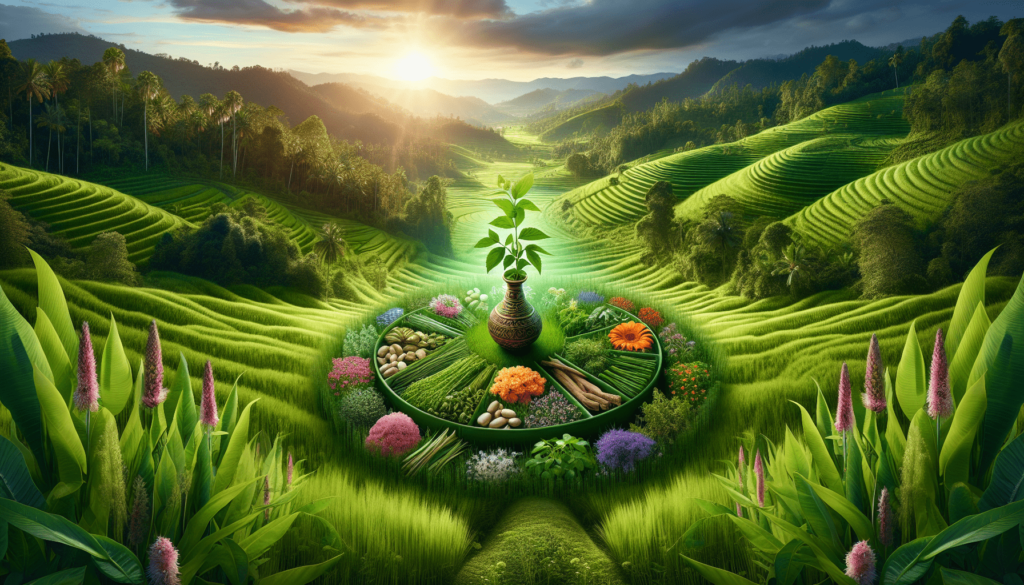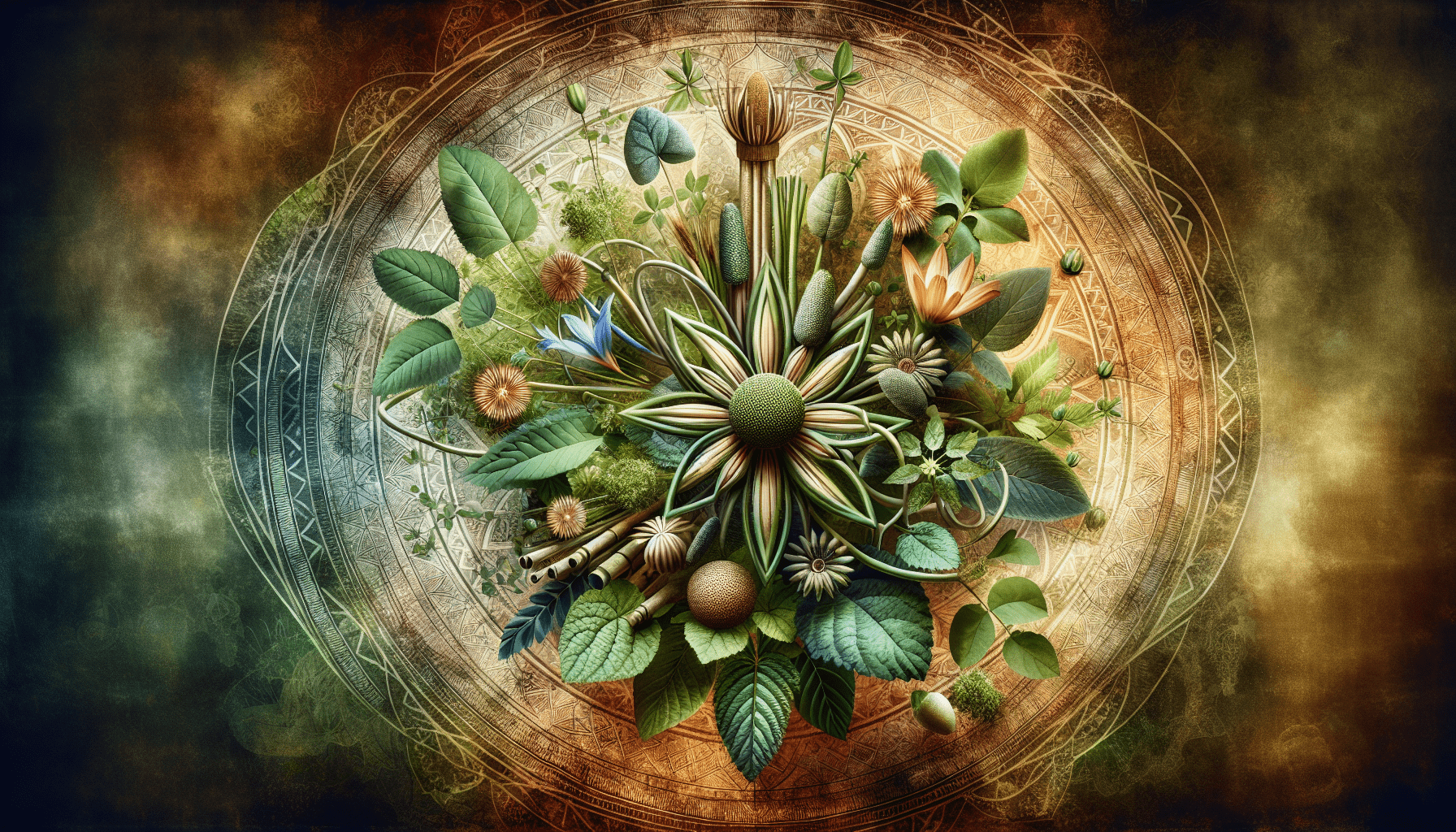So you’ve always been fascinated by the healing power of plants and want to explore the world of medicinal herb cultivation? Well, you’re in for a treat! In this article, we will take you on a journey into the art of cultivating medicinal herbs – from understanding the benefits and uses of these plants to learning the essential techniques needed to nurture them. Whether you’re a beginner or an experienced gardener, get ready to unlock the secrets of nature’s pharmacy and discover how you can cultivate your own sanctuary of medicinal herbs.

Choosing Medicinal Herbs
When it comes to choosing medicinal herbs for your garden, it’s important to first identify your specific needs. Are you looking for herbs to treat common ailments like headaches and upset stomachs, or are you interested in more specialized herbs for chronic conditions? Once you have a clear understanding of what you’re looking for, you can begin researching different medicinal herbs that align with your needs.
Researching Medicinal Herbs
Research is key when it comes to selecting the right medicinal herbs for your garden. Take the time to learn about the properties and uses of each herb you’re considering. Are there any potential side effects or interactions with other medications? Are there specific growing conditions that need to be met? By equipping yourself with this knowledge, you can make informed decisions and ensure the success of your herb garden.
Considering Climate and Growing Conditions
It’s important to consider the climate and growing conditions in your area before selecting medicinal herbs. Some herbs thrive in sunny, dry environments, while others prefer shaded or moist conditions. Take note of the average temperatures, rainfall, and sunlight exposure in your region. This information will help you choose herbs that are well-suited to your specific climate, increasing their chances of thriving in your garden.
Selecting Appropriate Herbs for Cultivation
Once you’ve considered your needs, researched medicinal herbs, and determined the climate and growing conditions in your area, it’s time to select the appropriate herbs for cultivation. Take into account the space you have available, as well as the time and effort you are willing to dedicate to the garden. Some herbs are easier to grow and maintain than others, so choose herbs that align with your level of experience and commitment.
Preparing the Growing Area
Before you start planting your medicinal herbs, it’s important to prepare the growing area to ensure optimal growth and yield. Start by analyzing the soil composition in your garden. Different herbs thrive in different soil types, so understanding the composition of your soil will help you determine what amendments may be necessary.
Testing the pH levels of your soil is another crucial step in preparing the growing area. Most medicinal herbs prefer a slightly acidic to neutral pH, so if your soil is too alkaline or acidic, you may need to make adjustments to create the right environment for your herbs.
Amending the soil is often necessary to provide the necessary nutrients for your herbs. This can be done by adding compost, organic matter, or specific fertilizers to improve the soil’s fertility and structure.
Creating suitable drainage is also essential to prevent waterlogged soil, as excess moisture can lead to root rot and other diseases. Ensure that your growing area has proper drainage systems in place or consider using raised beds or containers to control moisture levels.
Before planting, it’s important to clear the area of weeds and debris. Weeds can compete with your herbs for water and nutrients, so being proactive in their removal will help ensure the success of your medicinal herb garden.
Finally, organizing your planting beds or containers is a practical step in ensuring that your garden is efficiently laid out. This will help you keep track of different herb varieties, provide easier maintenance, and promote a clean and organized growing area.

Sourcing Plant Materials
There are several ways to obtain plant materials for your medicinal herb garden. You can start from seeds, purchase potted plants, use cuttings or divisions from existing plants, or propagate herbs from root divisions or bulbs.
Obtaining seeds gives you the opportunity to start from scratch and watch your herbs grow from tiny seeds into thriving plants. Be sure to choose reputable seed suppliers to ensure the quality and viability of the seeds.
Purchasing potted plants is a convenient option if you prefer to skip the germination process and have more mature plants in your garden. Look for healthy plants with strong root systems and check for any signs of pests or diseases.
Using cuttings or divisions from existing plants is a cost-effective way to expand your herb collection. This method involves taking a portion of an existing plant, such as a stem or root, and encouraging it to develop its own roots and grow into a new plant.
Propagating herbs from root divisions or bulbs is another option, especially for perennial herbs. This involves carefully separating the root system or bulbs of a mature plant and replanting them to create new plants. It’s important to ensure that each division or bulb has enough roots and growth potential to successfully establish itself.
Planting and Transplanting
When it comes to planting your medicinal herbs, timing is crucial. Each herb has its own ideal planting time, depending on the climate and growing conditions. Some herbs prefer to be planted in the spring, while others thrive when planted in the fall. Research the optimal planting times for each herb you’re growing to give them the best chance of success.
Before planting, you’ll need to prepare the soil by removing any weeds or debris and loosening it to encourage good root development. Consider incorporating organic matter or compost into the soil to provide essential nutrients.
When it comes to spacing and depth guidelines, each herb has slightly different requirements. Some herbs, like lavender, prefer wider spacing, while others, like basil, can be planted closer together. Follow the specific guidelines for each herb to avoid overcrowding and encourage healthy growth.
Different herbs have different planting techniques based on their root systems and growth habits. Some herbs, like mint, are best planted in containers to prevent their invasive nature from taking over the garden. Others, like sage, prefer to be directly sown into the ground. Follow the recommended planting techniques for each herb to ensure proper establishment.
If you’re working with seedlings or potted plants, transplanting may be necessary. Be sure to handle the delicate roots with care and plant them at the appropriate depth in the soil. Water the transplanted herbs well to help them settle into their new environment.
Providing Adequate Care
Once you’ve planted your medicinal herbs, providing them with proper care is essential for their health and vigor. One of the most important aspects of care is watering. Different herbs have different watering requirements, so it’s important to research the specific needs of each herb. In general, ensure that the soil is consistently moist but not waterlogged.
Implementing proper irrigation systems can simplify the watering process and ensure that your herbs receive the right amount of water. Drip irrigation or soaker hoses are efficient options that deliver water directly to the roots, minimizing evaporation and reducing the risk of fungal diseases.
Fertilizing your herbs is another crucial aspect of care. Some herbs, like comfrey, are heavy feeders and require regular fertilization, while others, like rosemary, prefer a leaner soil. Use organic fertilizers or compost to provide the necessary nutrients without adding harmful chemicals to your garden.
Mulching is a valuable practice for both moisture retention and weed control. Organic mulches, such as straw or wood chips, can help conserve water by reducing evaporation and also suppress weed growth, keeping your herb garden healthier and more manageable.
Supporting plant growth with trellises or stakes is important for herbs that have a climbing or sprawling habit. Plants like cucumbers or lemon balm can benefit from trellises or stakes that provide support and prevent damage from wind or heavy rain.
Protecting your herbs from pests and diseases is crucial for their overall health. Regularly inspect your plants for any signs of pests or diseases and take appropriate measures to control and prevent their spread. This can include using organic insecticides, introducing beneficial insects, or practicing proper sanitation to minimize the risk of infections.
Harvesting Medicinal Herbs
Knowing when and how to harvest your medicinal herbs is key to maximizing their potency and flavor. Each herb has its own optimal harvesting time, which is often when the flowers are at their peak or just before they fully bloom. Research the specific harvesting times for each herb to ensure you’re picking them at their prime.
Using appropriate harvesting tools is important to prevent damage to the plants and to ensure clean and precise cuts. Sharp pruning shears or scissors are commonly used to harvest herbs, allowing for clean cuts that promote faster healing and reduced risk of infections.
Different herb parts require different harvesting techniques. For herbs like lavender or rosemary, the flowers or leaves can be easily snipped off the plant. For herbs like ginger or turmeric, careful digging or uprooting is necessary to harvest the underground parts. Make sure to follow the proper techniques for each herb to avoid damaging the plant or decreasing its yield.
After harvesting, it’s important to dry or process the herbs properly to retain their medicinal properties. Some herbs benefit from air-drying, while others require special techniques like freeze drying or steam distillation. Research the specific methods for each herb to ensure that the medicinal qualities are preserved.
Properly storing your harvested herbs is crucial to maintain their potency and freshness. Most herbs can be stored in airtight containers away from direct sunlight and moisture. Label your containers with the herb name and harvest date to keep track of their freshness and quality.
Utilizing Medicinal Herbs
Understanding the properties and uses of each medicinal herb in your garden is essential for utilizing them effectively. Research the specific benefits and applications of each herb to harness their healing potential. Some herbs can be brewed into teas or infused into oils or tinctures, while others can be used topically or made into salves and creams.
Researching the dosage and administration of medicinal herbs is important to ensure their safe and effective use. Some herbs may have specific dosage guidelines or contraindications that need to be considered. Consulting with herbalists or healthcare professionals can provide valuable insights and guidance when it comes to using medicinal herbs.
Creating herbal remedies or preparations is a fun and practical way to make the most of your medicinal herbs. From simple infusions and decoctions to more complex formulations like balms and capsules, there are countless ways to incorporate herbs into your wellness routine. Experiment with different recipes and techniques to find what works best for you.
Consulting with herbalists or healthcare professionals can provide valuable insights and guidance when it comes to using medicinal herbs. Their expertise and experience can help you navigate the complexities of herbal medicine and ensure that you’re utilizing the herbs safely and effectively.
Maintaining a Herbal Garden
Regular maintenance tasks are essential to keep your medicinal herb garden healthy and productive. This includes tasks such as weeding, pruning, and trimming. Weeding should be done regularly to prevent competition for nutrients and water, ensuring that your herbs have the best growing conditions.
Pruning and trimming are important for maintaining the shape and size of your herbs, as well as promoting healthy growth. Remove any dead or damaged branches and trim back overgrown areas to encourage new growth and prevent disease.
Dividing overcrowded plants is necessary to ensure that each herb has enough space and resources to thrive. This is especially important for herbs that tend to spread and form dense clumps. Carefully dig up the plants, divide them into smaller sections, and replant them to create healthier and more productive plants.
Renewing soil fertility is an ongoing process in herbal gardening. Regularly add compost or organic matter to replenish nutrients and improve soil structure. This will help ensure that your herbs have the necessary resources to thrive and produce high-quality medicinal compounds.
Preventing weed growth is important to minimize competition for resources and maintain a clean and organized garden. Mulching, as mentioned earlier, is an effective method for suppressing weed growth. Regularly inspect your garden for any signs of weeds and remove them promptly to prevent them from spreading.
Maintaining a clean and organized garden is not only visually appealing but also beneficial for the health of your plants. Remove any debris or fallen leaves, keep pathways clear, and regularly sanitize your tools to prevent the spread of diseases.
Expanding Herb Cultivation Knowledge
Expanding your knowledge of herb cultivation can be an exciting and enriching experience. Participating in workshops or courses dedicated to herbal gardening can provide valuable insights and practical tips. These opportunities can also connect you with other like-minded individuals who share your passion for medicinal herbs.
Joining herb cultivation communities, whether online or in person, is a great way to learn from others and exchange experiences. These communities often provide a platform to ask questions, share successes and challenges, and gain inspiration from fellow herb enthusiasts.
Reading books and articles can further deepen your understanding of medicinal herb cultivation. There are countless resources available that cover everything from basic gardening techniques to advanced herbal medicine. Take advantage of the wealth of knowledge that these publications offer to expand your expertise.
Experimenting with different techniques is a fun way to learn and discover what works best for your specific growing conditions. Try different planting methods, fertilizers, or pest control strategies to find the best approach for your medicinal herb garden. Keep notes and observations to track your progress and refine your techniques.
Sharing experiences and learning from others is a great way to continue expanding your herb cultivation knowledge. Whether it’s through online forums, social media groups, or local meetups, engaging with the herbal community can open doors to new ideas and perspectives. Share your own experiences and be open to hearing from others to foster a collective learning environment.
Promoting Sustainability
Promoting sustainability in your medicinal herb garden is not only beneficial for the environment but also for the health and quality of your herbs. Using organic and sustainable practices is essential to minimize the use of synthetic chemicals and foster a healthier ecosystem.
Composting and recycling organic materials is an effective way to reduce waste and create nutrient-rich soil amendments. Collect kitchen scraps, yard waste, and herb trimmings to create your own compost pile, which can be used to nourish your medicinal herbs naturally.
Conserving water and energy is important for sustainable gardening practices. Utilize rainwater collection systems to reduce reliance on potable water and opt for energy-efficient tools and equipment when possible. Implementing timers or moisture sensors in irrigation systems can help optimize water usage and reduce wastage.
Supporting biodiversity in your garden is vital for a balanced ecosystem. Plant companion plants or attract beneficial insects to control pests naturally and minimize the need for harmful pesticides. Creating a diverse habitat not only benefits your herbs but also nurtures a wider range of plant and animal species.
Preserving endangered medicinal herbs is a critical step in promoting sustainability and conservation. Some medicinal herbs are at risk due to habitat destruction or over-harvesting. Whenever possible, choose cultivated or sustainably sourced herbs and support organizations working towards conservation efforts.
By following these comprehensive steps, you can embark on a rewarding journey of cultivating medicinal herbs. From selecting the right herbs to harvesting and utilizing them effectively, your garden can provide an abundant supply of natural remedies. Take joy in the process of nurturing your herbs and reap the many benefits they offer for your health and well-being.

